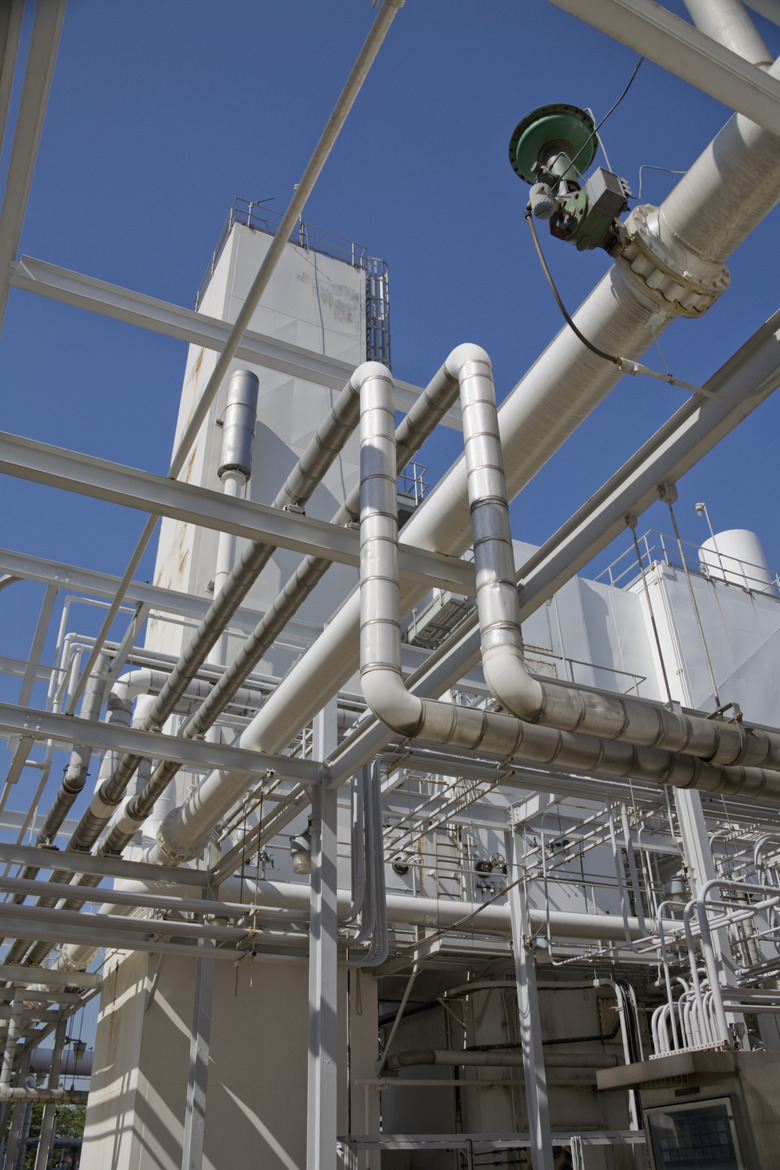The Disadvantages Of Rotating Biological Contactors
Step 1
An RBC system requires the installation of a series of disks attached to a shaft that allows them to turn at a rate of between one and two revolutions per minute, according to Virginia Community College. Each disk is coated with a biological slime that aids in the breaking down of organic materials within the wastewater. One of the disadvantages of the system is the potential failure of mechanical components within the system, such as the shafts, disks and bearings. The system is commonly installed in a concrete tank, which can make it difficult for plant operators to monitor the system effectively within the tank.
Installation
Step 1
A single RBC is usually not capable of completing the breakdown of organic matter required for the effective treatment of wastewater, according to Virginia Community College. A single RBC is known as a stage, with a series of RBCs known as a train. To complete the treatment of wastewater to acceptable levels, a wastewater treatment plant needs two or three trains with at least three stages in each train. The installation of a large number of RBCs increases the initial cost of setting up the system.
Step 2
- An RBC system requires the installation of a series of disks attached to a shaft that allows them to turn at a rate of between one and two revolutions per minute, according to Virginia Community College.
- The system is commonly installed in a concrete tank, which can make it difficult for plant operators to monitor the system effectively within the tank.
Changes
Step 1
The biological slime that coats each disk within an RBC must be monitored to ensure the system is reacting properly with the organic waste entering the RBC system. Climates where winter temperatures drop below freezing require the RBC to be covered or encased in a concrete tank. This makes monitoring the wastewater difficult for plant operators. A gray, shaggy growth on the RBC is seen as the correct growth, with reddish brown growth a sign of nitrification. The disks of the RBC can become covered in a white, chalky covering that indicates high sulfur levels in the RBC. In systems where the temperature of the wastewater has become elevated or the pH of the system has changed, the slime can disappear from the disks, according to Virginia Community College.
Advantages
Step 1
The advantages of an RBC system include the low cost of operation for plant operators who do not require expensive training or qualifications to monitor the system. Because the RBC system does not require high power to operate, the system can be energy- and cost-saving. The waste that settles at the bottom of the RBC system can be easily separated from the rest of the waste passing through the system.
Step 2
- The biological slime that coats each disk within an RBC must be monitored to ensure the system is reacting properly with the organic waste entering the RBC system.
- The disks of the RBC can become covered in a white, chalky covering that indicates high sulfur levels in the RBC.
